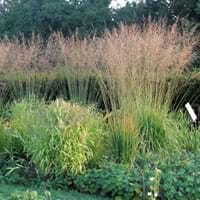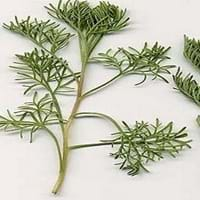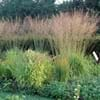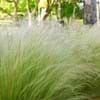Life Span
Perennial
Perennial
Origin
Europe, Eastern Europe, Southern Europe, Russia/Siberia, Asia, Central Asia, Southern Asia
Southern Europe
Types
Not Available
not available
Habitat
Boggy areas, Dry and Young forest Heaths, Lowland
Temperate Regions
USDA Hardiness Zone
5-8
5-8
Sunset Zone
1a, 1b, 2a, 2b, 3a, 3b, 4, 5, 6, 7, 8, 9, 14, 15, 16, 17
2b, 3a, 3b, 4, 5, 6, 7, 8, 9, 10, 11, 12, 13, 14, 15, 16, 17, 18, 19, 20, 21, 22, 23, 24
Habit
Arching/Fountain-shaped
Upright/Erect
Minimum Height
Not Available
Minimum Width
Not Available
Flower Color
Dark Purple
Yellow, Gray
Flower Color Modifier
Bicolor
Not Available
Fruit Color
Non Fruiting Plant
Non Fruiting Plant
Leaf Color in Spring
Green
Gray Green
Leaf Color in Summer
Light Green
Gray Green
Leaf Color in Fall
Green, Gold
Gray Green
Leaf Color in Winter
Tan
Not Available
Leaf Shape
Needle like
Long hair-like leaves
Plant Season
Spring, Summer, Fall, Winter
Spring, Summer, Fall
Sunlight
Partial Sun, Partial shade
Full Sun
Type of Soil
Clay, Loam, Sand
Loam
The pH of Soil
Acidic, Neutral
Neutral
Soil Drainage
Average
Well drained
Bloom Time
Early Summer, Summer, Late Summer, Early Fall
Late Summer
Tolerances
Not Available
Not Available
Where to Plant?
Ground, Pot
Ground, Pot
How to Plant?
Divison, Transplanting, Vegetative Reproduction
Cuttings, Seedlings
Plant Maintenance
Low
Medium
Watering Requirements
Requires regular watering, Water more frequently during periods of extreme drought
Average Water Needs, Keep the Soil well drained
In Summer
Lots of watering
Lots of watering
In Spring
Moderate
Moderate
In Winter
Average Water
Average Water
Soil pH
Acidic, Neutral
Neutral
Soil Type
Clay, Loam, Sand
Loam
Soil Drainage Capacity
Average
Well drained
Sun Exposure
Partial Sun, Partial shade
Full Sun
Pruning
Prune in winter, Remove damaged leaves, Remove dead branches, Remove dead leaves
Cut back old stems to the ground, Remove damaged leaves, Remove dead branches, Remove dead leaves
Fertilizers
No need to fertilize every year
All-Purpose Liquid Fertilizer, Complete balanced fertilizer
Pests and Diseases
Pests and diseases free
Free of serious pests and diseases
Plant Tolerance
Not Available
Drought
Flowers
Showy
Insignificant
Flower Petal Number
Single
Not Available
Foliage Texture
Medium
Medium
Foliage Sheen
Matte
Matte
Attracts
Not Available
Not Available
Allergy
Not Available
Skin irritation
Aesthetic Uses
Showy Purposes, Water gardening
Farmland, small hedge, Wild gardens
Beauty Benefits
Not Available
Not Available
Environmental Uses
No fertilizer, pesticides, or herbicides needed
Air purification
Medicinal Uses
No Medicinal Use
Antiseptic, Digestive, Liver problems, Skin Disorders, Tonic
Part of Plant Used
Whole plant
Branch, Fibres, Flower Stalk, Gum, Leaves, Twigs
Other Uses
Used as Ornamental plant
Oil is used in mosquito repellents, Used for fragrance, Used to make hair tonic
Used As Indoor Plant
No
No
Used As Outdoor Plant
Yes
Yes
Garden Design
Bedding Plant, Container, Cutflower, Dried Flower/Everlasting, Mixed Border
Herb, Vegetable, Mixed Border, Rock Garden, Wall
Botanical Name
Molinia arundinacea
ARTEMISIA abrotanum
Common Name
Moor Grass
lad's love , southern wormwood , old man , boy's love , appleringie , sitherwood
In Hindi
Tall Moor Grass
southernwood
In German
Hoch Pfeifengras
Eberraute
In French
Herbe Moor hauteur
aurone ou citronnelle
In Spanish
Tall Grass Moor
Artemisia abrotanum
In Greek
Ψηλός Moor Grass
Artemisia abrotanum
In Portuguese
Alto Moor Relva
Abrótano
In Polish
Wysoki Moor Trawa
Bylica boże drzewko
In Latin
Alta Maurus Grass
Southernwood
Phylum
Magnoliophyta
Magnoliophyta
Class
Liliopsida
Magnoliopsida
Order
Cyperales
Asterales
Family
Poaceae
Asteraceae
Clade
Angiosperms, Commelinids, Monocots
Angiosperms, Asterids, Eudicots
Tribe
Not Available
Anthemideae
Subfamily
Not Available
Asteroideae
Number of Species
Not Available
Not Available
Importance of Molinia Arundinacea and Southernwood
Want to have the most appropriate plant for your garden? You might want to know the importance of Molinia Arundinacea and Southernwood. Basically, these two plants vary in many aspects. Compare Molinia Arundinacea and Southernwood as they differ in many characteristics such as their life, care, benefits, facts, etc. Every gardener must at least have the slightest clue about the plants he wants to plant in his garden. Compare their benefits, which differ in many ways like facts and uses. The medicinal use of Molinia Arundinacea is No Medicinal Use whereas of Southernwood is Antiseptic, Digestive, Liver problems, Skin Disorders and Tonic. Molinia Arundinacea has beauty benefits as follows: Not Available while Southernwood has beauty benefits as follows: Not Available.
Compare Facts of Molinia Arundinacea vs Southernwood
How to choose the best garden plant for your garden depending upon its facts? Here garden plant comparison will help you to solve this query. Compare the facts of Molinia Arundinacea vs Southernwood and know which one to choose. As garden plants have benefits and other uses, allergy is also a major drawback of plants for some people. Allergic reactions of Molinia Arundinacea are Not Available whereas of Southernwood have Skin irritation respectively. Having a fruit bearing plant in your garden can be a plus point of your garden. Molinia Arundinacea has showy fruits and Southernwood has no showy fruits. Also Molinia Arundinacea is not flowering and Southernwood is not flowering . You can compare Molinia Arundinacea and Southernwood facts and facts of other plants too.





